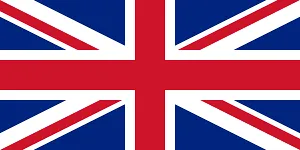
Beard Transplantation
For many men, having a thick, well-groomed beard is an appealing and desirable appearance. But not all men are born with thick, bushy beards. However, beard transplantation is now possible as a result of advancements in hair transplantation technology.
Although beard transplanting is a therapy approach that has been used for many years, it is known that its use has expanded recently. The importance of beards in giving men a handsome, manly appearance cannot be overstated. Men whose beards don't grow at all or as frequently as they'd like may feel uneasy mentally and may lose confidence. Beard transplantation is recognized as a successful technique for dealing with issues like sparse or non-growing beards.
This condition can be seen as a result of causes like aging, localized burns, several diseases, hormonal variables, and drug use. On the other hand, genetic factors can also result in issues like beardlessness or sparsity.
In order to get a natural-looking beard appearance, healthy hair follicles are removed from the body and transplanted to the desired location. A technique that can be used to hide facial scars or acne is beard transplantation. In this regard, it may be said that locations where a fuller appearance is wanted despite being fully hairless or having a beard can benefit from beard transplanting.
What exactly is a beard transplant?
The simplest definition of beard transplantation is the application of the hair transplantation method to the facial region. Hair follicles are transplanted to the beardless areas of the face during the beard transplant operation from the back of the hair or another suitable body location.
When there is no beard on the relevant portions of the face throughout adolescence, when there is no beard because of an accident or infection, or when the beard is very sparse, beard transplantation is an efficient treatment that offers benefits.
The beard transplant treatment can produce successful results for those who have thin beards owing to hereditary or hormonal issues, who have regional beard loss as a result of traumas like injury or burns, and who have a problem with corners. Problems like beard thinning or shedding can also be brought on by skin conditions like eczema or psoriasis. If skin conditions such as these are the underlying cause of beard thinning or shedding, the condition should be treated in addition to performing the beard transplant process.
When doing beard transplantation, one of the procedures that has seen an increase in demand in recent years, careful planning should be made. because beards differ from hair in many ways. The density of each person's beard varies as well. For this reason, each patient's beard transplant procedure needs to be planned differently.
What is the procedure for beard transplantation?
Similar to the hair transplant process, in order to correct the issues in the beard area, hair follicles are removed from an appropriate section of the patient's body and transplanted to locations where there is no beard, thinning, or shedding. As a result, it is made sure the individual has a beard that looks natural. Both those with a thin beard and those with none at all may benefit from beard transplanting.
The FUE procedure is used for beard transplantation. In general, the donor location is selected to be the hairs on the neck and cheekbones, which are near to the beard area but not particularly attractive. It might be possible to use the hairs in the neck area if sufficient grafts from this area cannot be obtained. This is because the hair follicles removed from the nape region do not run the risk of becoming deprived in that region.
The area to be transplanted, the donor area, and the number of hair follicles required to be transplanted into this location are all decided prior to beginning the beard transplant surgery. One of the elements that ensures the success of the beard transplant procedure and produces natural results is the root canal opening process. The grooves created during the grooving process should be the correct angle and correspond to the width of the hair follicles that will be planted during the beard transplant surgery. However, in this instance, a successful beard transplant technique can be carried out to produce beards that look natural.
After grooving is completed during the transplantation of the beard, grafts are taken from the donor area. The number of grafts determined separately is taken one by one using a very fine-tipped, swift equipment known as a micro motor. After being removed, the hair roots are inserted one at a time into the channels that have been made in the area where the beard will be planted. The beard transplant procedure is finished as a result.
How soon after a beard transplant does redness fade?
The face is a delicate location to operate on while performing a beard transplant. There are various things to keep in mind both before and during the beard transplant application. The first of these is the doctor's advice coming true in its entirety. The transplant of a beard cannot succeed if this is the case.
After the beard transplant surgery is finished, it can be visible that a procedure was performed to the patients' faces for 4 to 5 days. The development of redness and swelling on the face throughout this phase is regarded as a very natural phenomenon. Within a few days, such situations typically get better on their own.
Following beard transplantation, redness and crusting are very minor problems and reactions that go away with time. The FUE technique utilized in the beard transplant procedure results in acne-like redness in the hair follicles that were implanted. It is not necessary to take any action to interfere in this circumstance because it is deemed natural.
Another issue that resembles redness is the crusting that develops when the hair follicles are transplanted into the drilled holes.
However, direct contact with the beard transplant area must be avoided when there is redness and crusting in order for the procedure to go correctly. In addition to preventing the growth of bacteria after the procedure, avoiding contact with the beard transplant area also protects the structure of the hairs that attempt to adhere to the roots. The crusting often starts to dissolve from the third day after the transplant, and the redness will gradually go away on its own.
What Is the Time Frame for Beard Transplantation?
The beard transplant process, which is carried out under sedation and local anesthetic, typically takes 2 to 5 hours to complete. The amount of transplant, the number of grafts needed, the size of the area to be transplanted, and other factors may affect how long it takes to finish the application.
Depending on the region, a beard transplant surgery may require a different amount of hair follicles. Typically, the cheek area can be filled with 300–700 roots, the sideburn area with 200–250 roots, and the chin area with 600–700 roots.
For those seeking a more attractive and masculine appearance, beard transplantation can produce effective and realistic results. Even if there isn't a beard in the area, beard transplantation can provide exceptionally natural-looking and attractive outcomes because to its cutting-edge techniques. Transplanting a beard is a personally chosen method. Beard transplanting is completed in a single session, regardless of the technique used or the patient's needs. As a result, the intended outcomes can be attained in a single session.
Prior to beginning the beard transplant operation, the patient's expectations are ascertained through a preliminary interview, and the state of the existing beard is assessed. The procedure for the beard transplant is planned in light of this information. The grafts are then moved from the donor location to the recipient area. The patient is told of this information prior to the application, even though the method to be employed during the treatment and the amount of grafts to be taken affect the duration of the procedure in beard transplantation.
The required quantity and density must be assessed in order to get a natural-looking beard appearance in the transplanted location. Even though the hair follicles in the nape area are typically favored as donors, most people's nape hair grows downward. As the hair grows a little, the location and lack of hair follicles removed from this place vanish. The beards in the neck region can also be transferred if the hair follicles on the nape are insufficient. Within a short period of time, the transplanted roots become acclimated to their new environment. Once these procedures are finished, a beard might appear natural and attractive from an aesthetic standpoint. After a beard transplant, there isn't a lengthy recuperation period, although caution should be used.
What Aspects Should Be Taken Into Account During a Beard Transplant?
Following the doctor's instructions to the letter is a requirement after the beard transplant operation is complete in order to guarantee a healthy healing process and achieve the best results. For the first 24 to 48 hours following the beard transplanting procedure, the application region shouldn't come into touch with water. Similar like after a hair transplant, there may be redness and swelling similar to acne following the application in the area receiving the beard transplant. Such events ought to be regarded as commonplace. On the other hand, because the face is such a delicate area, it is crucial to adhere strictly to the doctor's instructions while the wound is healing.
Activities that could make you sweat should be avoided during the time period prescribed by the doctor after the beard transplant. Otherwise, undesirable circumstances like hair follicle distortion may appear. The hair follicles might not be able to keep their new positions in a healthy fashion as a result, and they might even stop growing. This could adversely impact the success of the beard transplant application.
For the time period specified by the doctor, avoid wearing scarves and form-fitting clothing after the beard transplant. This is due to the fact that during the healing process following a beard transplant, the hair follicles shouldn't be touched. After beard transplanting, a diet high in protein-rich meals and the vitamins A, E, C, D, B7, and B12 is advised. Foods containing these components have the ability to mend tissue, which is crucial for a quick and efficient healing process. After the beard transplant procedure, the patient should avoid lying face down for the time period prescribed by the doctor. They should also make sure that the area where the beard transplantation was performed makes little contact with the pillow.
Shock shedding may occur in the initial days following the beard transplant procedure. However, the beards will come back completely healthy a few months after the shocking loss. However, it should be remembered that it could take between 8 and 12 months to get the desired outcome.
For the first three days after the beard transplant, it is advised to rest. In addition, during three days following a beard transplant, smoking and drinking should be avoided. Smoking and drinking might have a negative impact on the healing process.
Since the crusts that form after transplanting a beard shouldn't be harmed, the application region needs to be guarded against potential harm. In this regard, caution should be exercised because blows to the area where the beard has been transplanted may alter the beard's growth pattern and provide an unsightly appearance.
Within two to four days of the beard transplant, it is preferable that the initial washing be done in the clinic where the procedure was performed. If the first wash must be performed at home, extreme caution must be used to prevent the loss of hair follicles during the pouring of the crusts.
After 4 weeks have passed since the beard transplant, you can trim the beards by using a good razor. The beard shouldn't be shaved for the first three months. During this time, the roots may break and remain under the skin if a razor blade is used. As a result, shaving can harm the process of growing a beard and result in unfavorable outcomes like breaking the roots and lingering under the skin.
The first three days after a beard transplant should be spent at home to avoid exposing the ducts that were opened for the procedure to microorganisms. Choose your after-beard transplant care products wisely based on their ingredients. It is recommended to use products with the fewest chemicals possible. Products with chemicals in them can make beards sparse and stiffen the structure of the beard.
Read more Close Post

Please let us know which operation you'd want assistance with through phone, Whatsapp, or email. Within 24 hours, we will contact you.
By filling out the form on our contact page or sending a message over Whatsapp, you may acquire pricing information for the surgery you wish.
We organise your arrival and departure from your nation to Turkey in collaboration with the highest quality travel firms.
Our staff greets you with the VIP Transfer van as soon as you arrive at the airport.
Your procedure is carried out at A+ hospitals by our experienced specialists.
The outcome of the treatment procedure is thoroughly tracked after the operation and after you return to your home country.
 en
en tr
tr